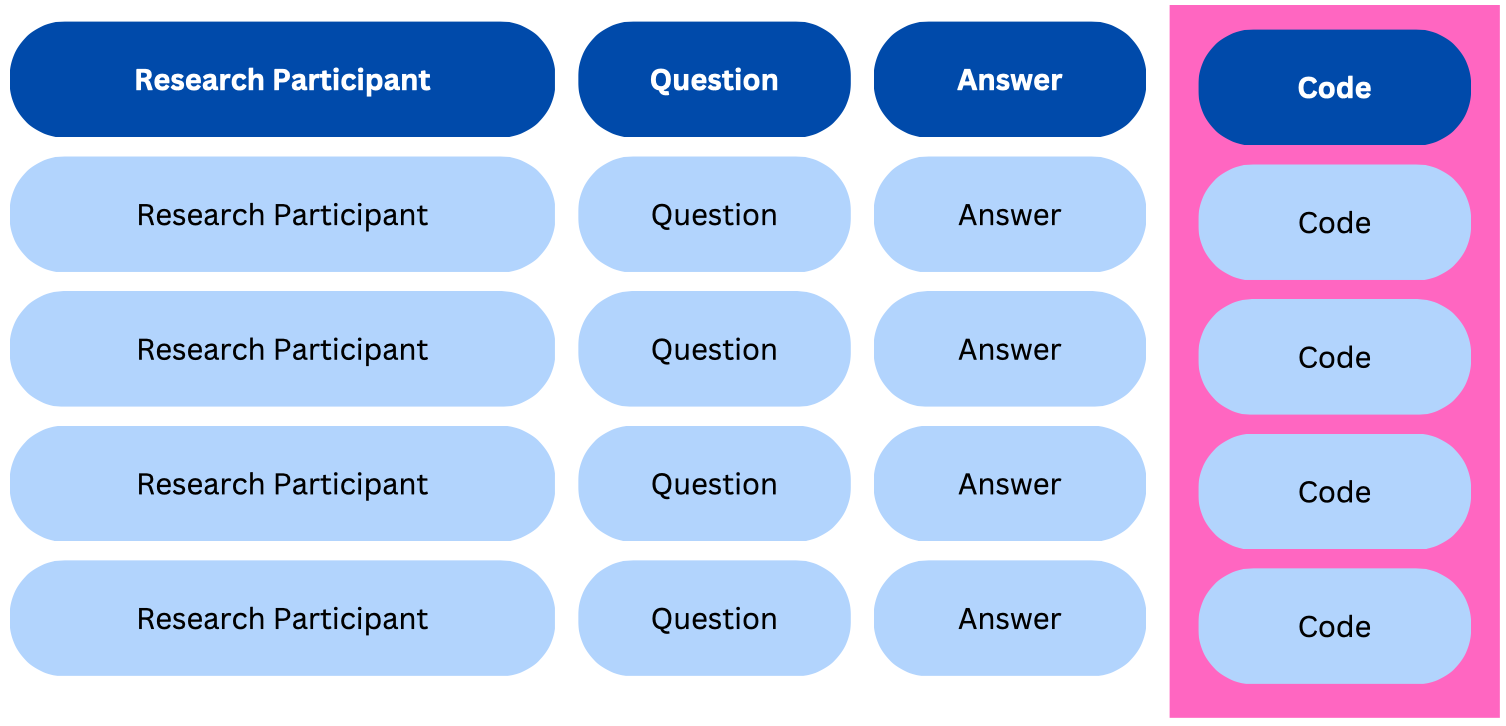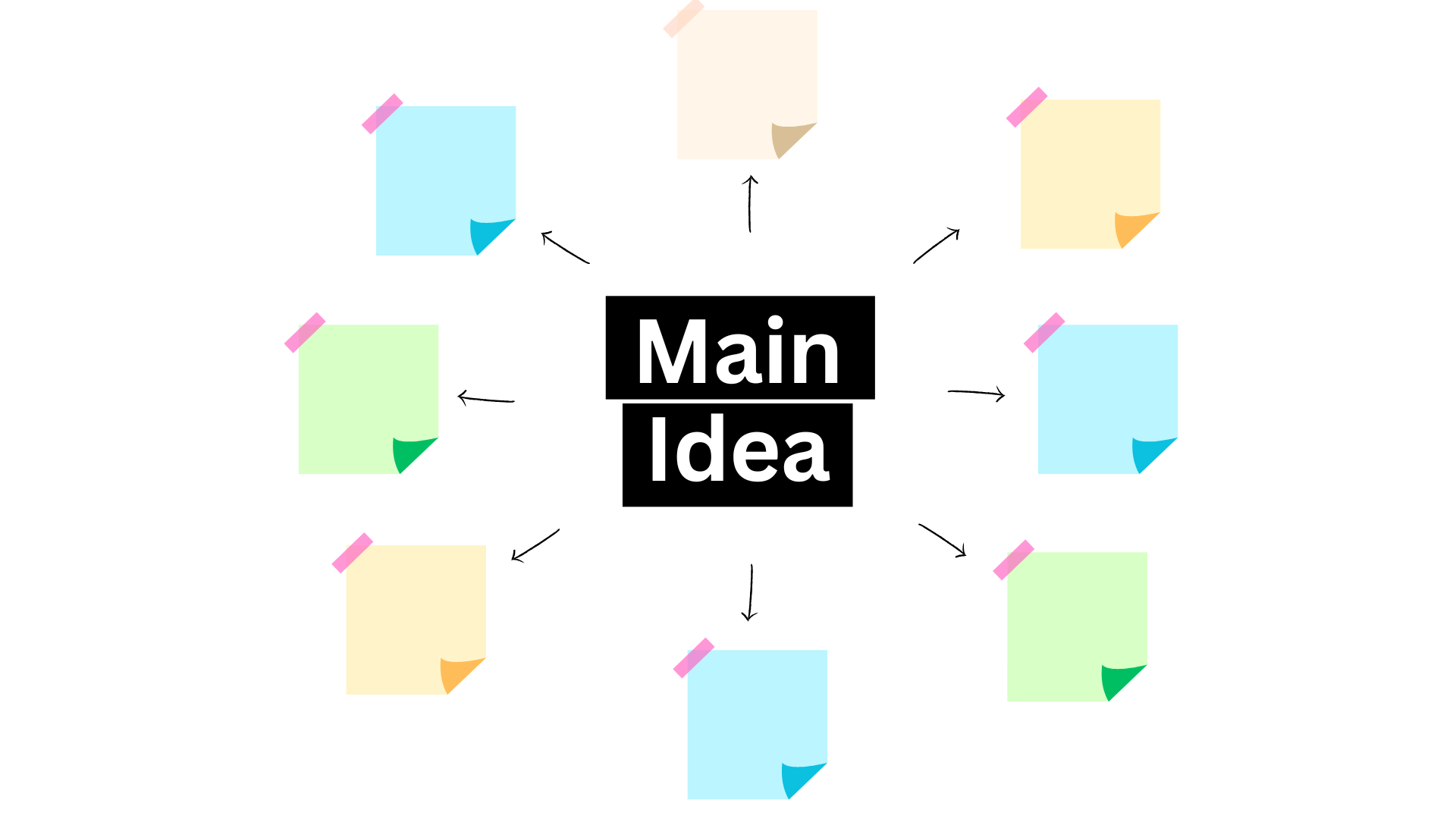If you’re unfamiliar with the term “qualitative coding”—don’t be intimidated. It has absolutely nothing to do with computer programming, and instead is the art of translating complex human experiences into meaningful, actionable ideas.
You may not realize it, but you’re a natural-born qualitative coder!
From an early age, our human brains are wired to recognize and process patterns. This is because detecting patterns has been essential to our survival. Our ancestors relied on their ability to identify patterns in their environment in order to find food, avoid danger, and navigate their surroundings. Today, we can use this skill to generate insights and draw conclusions from research.
What’s qualitative coding? Qualitative coding is an analysis method used in qualitative research to identify and categorize themes in the data. There are many QDA tools (qualitative data analysis) — paid and free — that can help researchers make sense of a large quantity of interview transcripts and/or research notes.
I’ve used Taguette and Dedoose for some projects, but find that I most prefer my tried and true QDA tool: Excel spreadsheets.

4 Steps to Effective Qualitative Coding
Here is my step-by-step process for qualitative coding:
1. Read and re-read the data.
Once you have collected the data, read and re-read it several times to get a sense of what it is saying. This step is crucial to identifying patterns and themes in the data.
It may be tempting to start coding right away without fully understanding the context of the data. However, it is important to thoroughly read and understand the data before starting to code. At first, EVERYTHING will feel important—but after you’ve read the data a couple times, you’ll begin to form opinions on which information is insightful and meaningful, and which is merely interesting.
2. Begin coding.
Once you have a general sense of the data, you can begin coding it. It’s not necessary to generate a list of codes beforehand. Instead, I assign one or more labels (or “codes”) to each piece of data as I go. You can use shortcodes, categories, or color-coding to help keep track of your codes. My codes are usually 2 to 5 words in length.
As you begin to code, you’ll notice patterns emerging. As you read and assign new codes, go back and re-label your existing codes. Often times, my codes will start out too broad or too narrow, so I keep refining them as I go.
How many codes should you have? If you can reasonably manage and keep track of them in your head, then you probably haven’t identified enough nuances in your data. If you have too few codes to work with, it will be very difficult to make meaningful connections later.
As an example, I gathered 4,000 written diary entries and coded them into 11 primary codes and 175 secondary codes. The primary codes helped me compartmentalize that much data, and the secondary codes helped me find meaning within each bigger bucket of topics.
3. Review codes.
After you have coded all the data, next, review just your codes. Are the labels all uniform (e.g., all present tense verbs, all concepts)? Is there enough data attached to each code to justify its existence? Are there any codes with too much volume that need to be sub-divided? Are the codes unique and self-evident?
If I’m collaboratively coding, I’ll physically sit next to my coding partners (or work off-camera on Zoom) and ask for their input if I get stuck or want to confer on the coding system we’re using.

4. Synthesize the coded data.
At last, you can begin to synthesize! Now that you’ve broken down the information into digestible ideas, next look for patterns and themes that emerge from the codes, and make note of any interesting or unexpected findings. What meaningful conclusions can be drawn? Are there any unexpected relationships between the themes? What are the implications? Why should anyone care or pay attention?
To help me organize my thoughts, I take notes or create a sticky note for each idea. From there, I’ll arrange the sticky notes into clusters, build them into a mindmap, or put them in a sequence of events.
